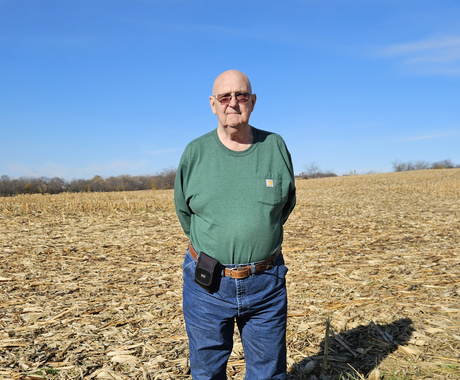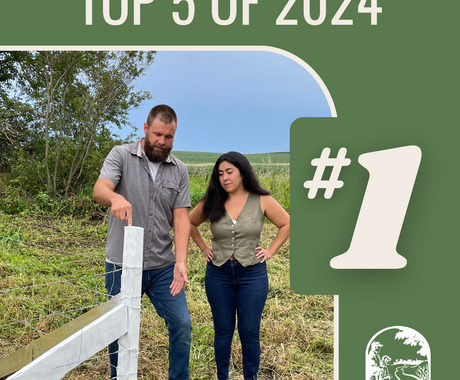By Kate Hansen, former staff member
Gene Albers joined his family’s tradition of farming in south central Kansas in the 1970s.
After working the land with their father, Gene and his two brothers became farmers. Now, with years of experience behind him, Gene is beginning to retire from his 1,200 acre cattle, wheat, and soybean operation.
As Gene reflects on his career, the benefits of years of conservation practices stand out to him. Two practices in particular, planting cover crops and implementing no-till, have been especially beneficial for his operation. He sees them as economically practical ways to steward the land.
Gene’s use of conservation practices began over two decades ago. After a change in the 1996 farm bill, he began incorporating no-till in 1997.
A few years later, he started planting cover crops like radishes, turnips, barley, and oats, and grazing his cattle on them. He was able to start planting cover crops by enrolling in the Conservation Stewardship Program (CSP). The program helped cover his costs for planting cover crops.
CSP is a working lands program run by the Natural Resources Conservation Service that provides farmers with financial and technical assistance for conservation practices. Gene was the first person in his county to hold a CSP contract.
“I am grateful for the program, because I would not have been as motivated to begin planting cover crops without it,” Gene said.
Over the years, Gene has seen the benefits of taking care of his soil with no-till and cover crops. When he began farming, people told him he would never produce soybeans because no one in the area did, and that local soil was not suitable for growing that crop.
However, Gene proved them wrong. His first attempt to grow soybeans resulted in a yield of 52 bushels per acre—a respectable average yield by today’s standards. He credits this success in part to his land stewardship practices.
Gene was glad to hear the 2018 farm bill increased support for cover crops under CSP. The update allows farmers to receive higher payments for cover crops under a CSP contract.
“I support the increase, especially because CSP was the main reason I started with cover crops,” Gene said. “It will help with overall water quality, air quality, and erosion if more people get involved with these practices.”
Today, Gene plants a cover crop blend of more than 10 species, and grazes his cattle on it. He says its benefits are diverse.
“Cover crops increase residue, put nitrogen into the soil, prevent soil erosion, support the roots, and reduce runoff,” he said. “I also don’t have to use as much fertilizer because there is more organic material in the soil.”
The farmer appreciates that, in the decade he has been planting cover crops, he hasn’t had to replant any crops due to soil crusting, which is common in Kansas.
Gene’s commitment to conservation extends off the farm as well: he is the chairman of the South Central Kansas Residue Alliance and former chairman of the Kingman County No-till Group. For 16 years, he also held multiple leadership roles for the Kansas Association of Conservation Districts, including serving two years as president. In all of his positions, Gene often organizes local tours and interacts with fellow farmers.
One common misconception Gene runs into when he talks with farmers about cover crops is they will use moisture that could be used for the next crop. He said this is “simply not true,” and cites instances on his farm where increased cover crops had a positive impact on yield.
As Gene begins to pass the farm on to his daughter and son-in-law, he is working with them to continue conservation practices. He hopes more farmers will realize the value.
“Making changes can be hard on a farm, but doing cover crops and no-till is worth it,” Gene said.
With higher payments for cover crops now available under CSP, farmers have an increased opportunity to start planting cover crops and integrating them into their farm’s systems. For Gene, the reason is clear: cover crops and no-till have transformed his operation for the better.





